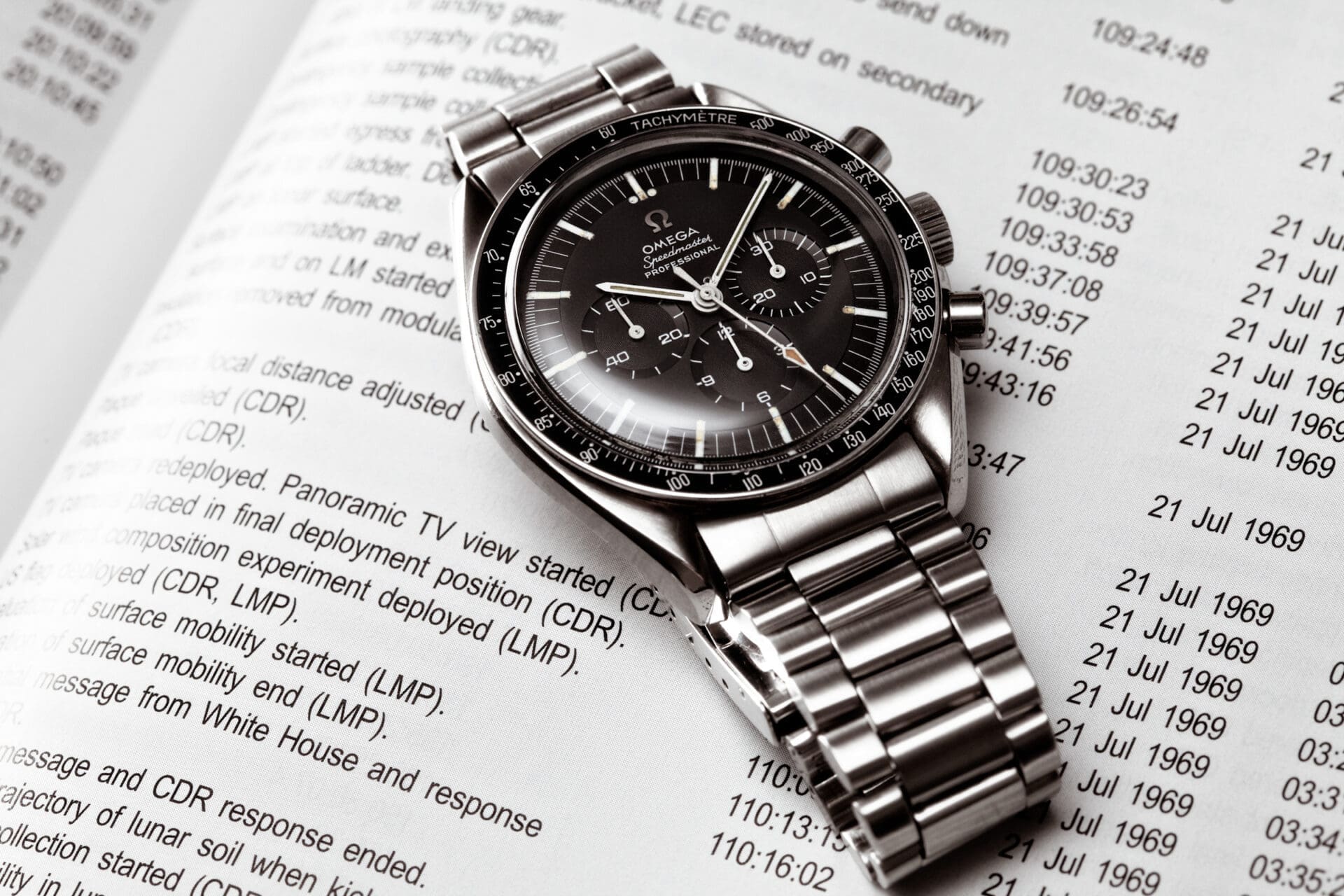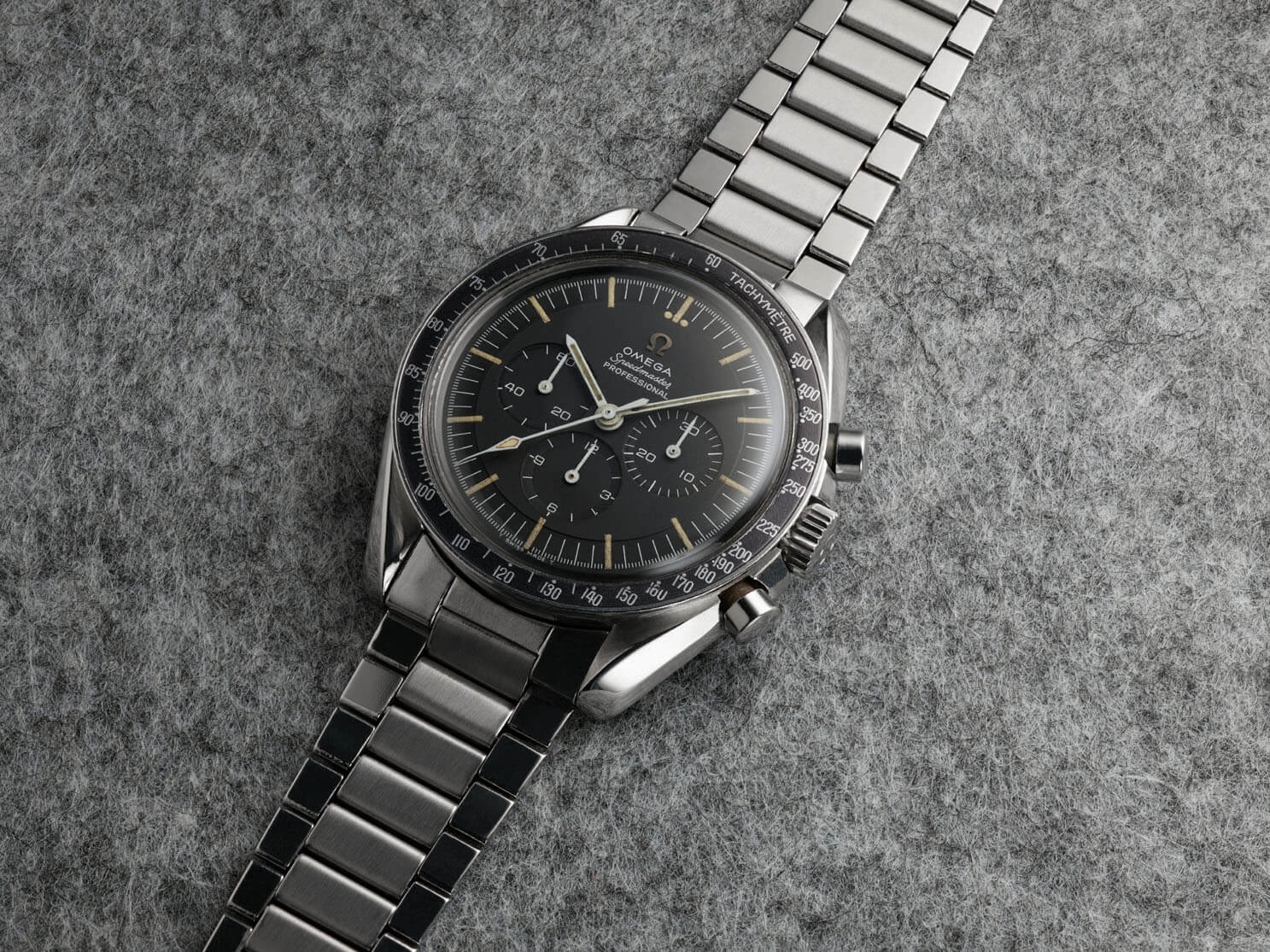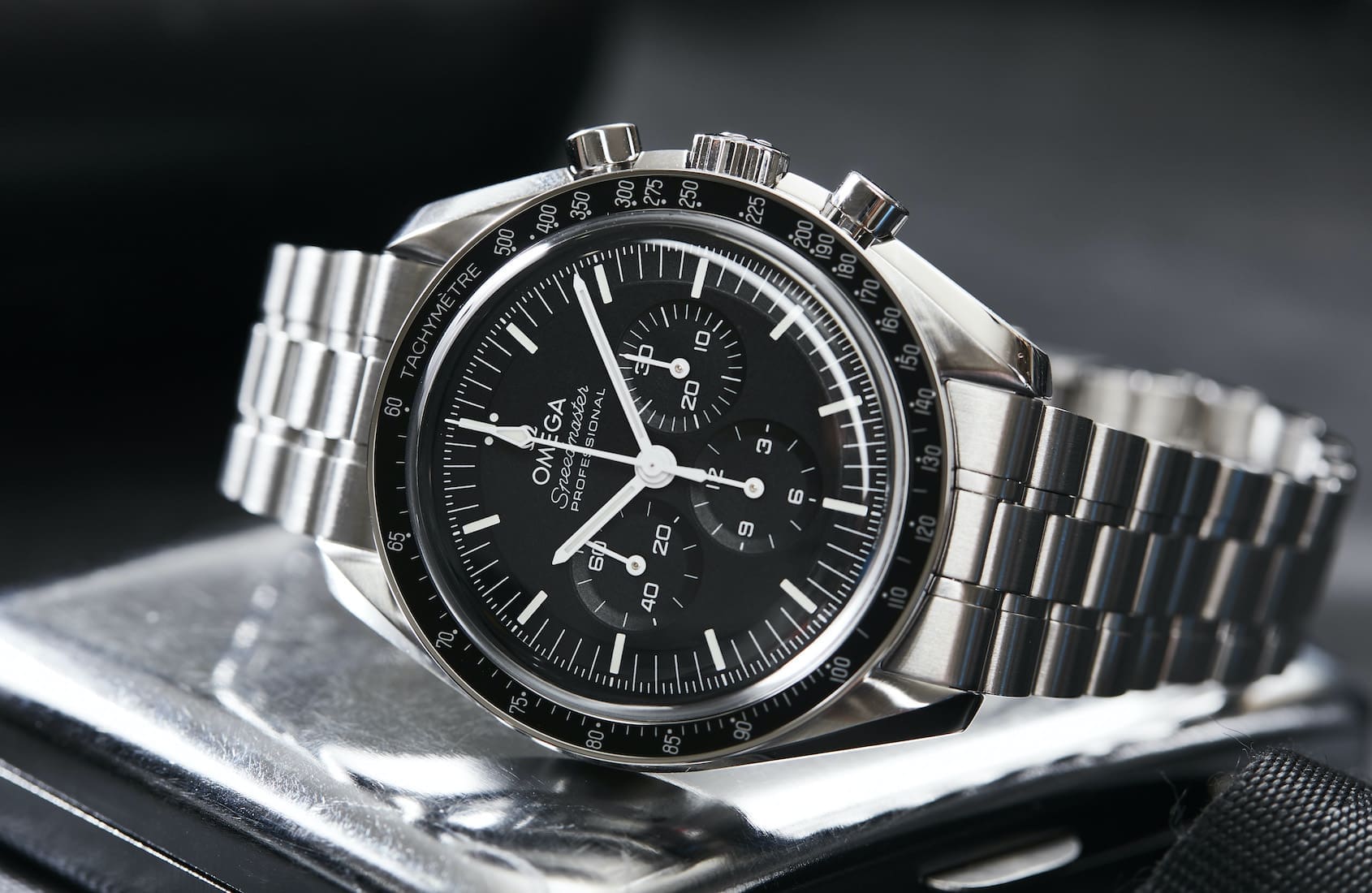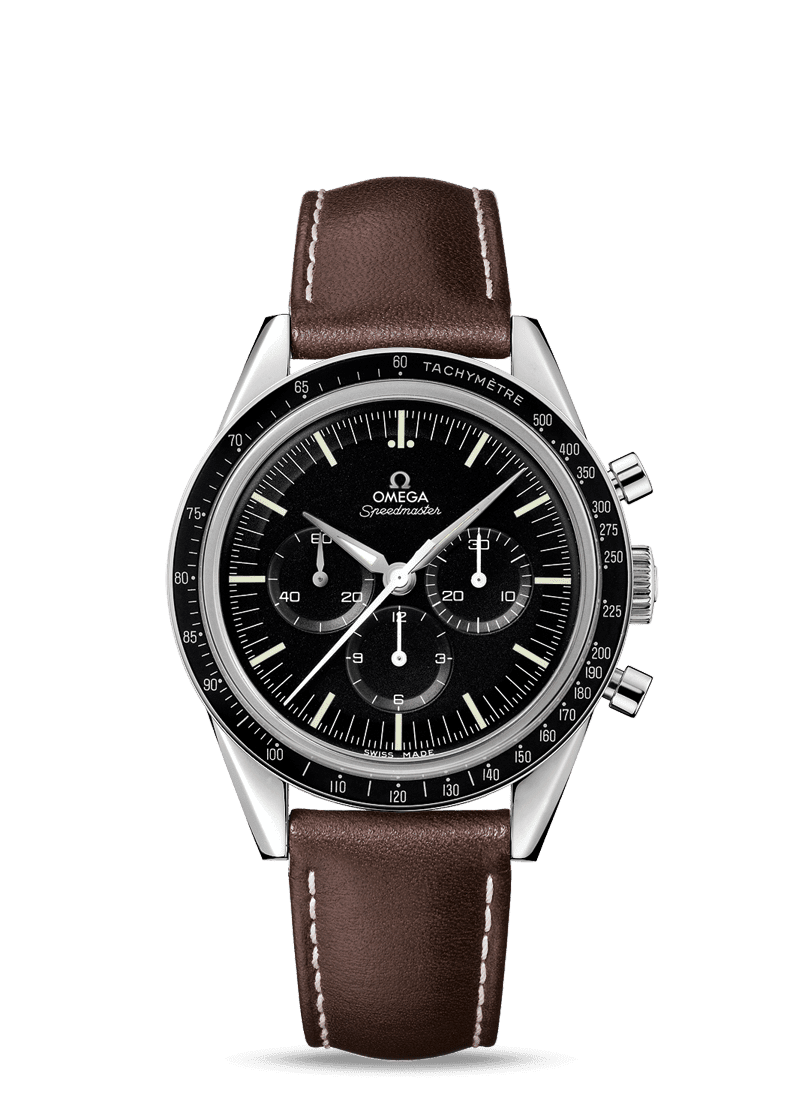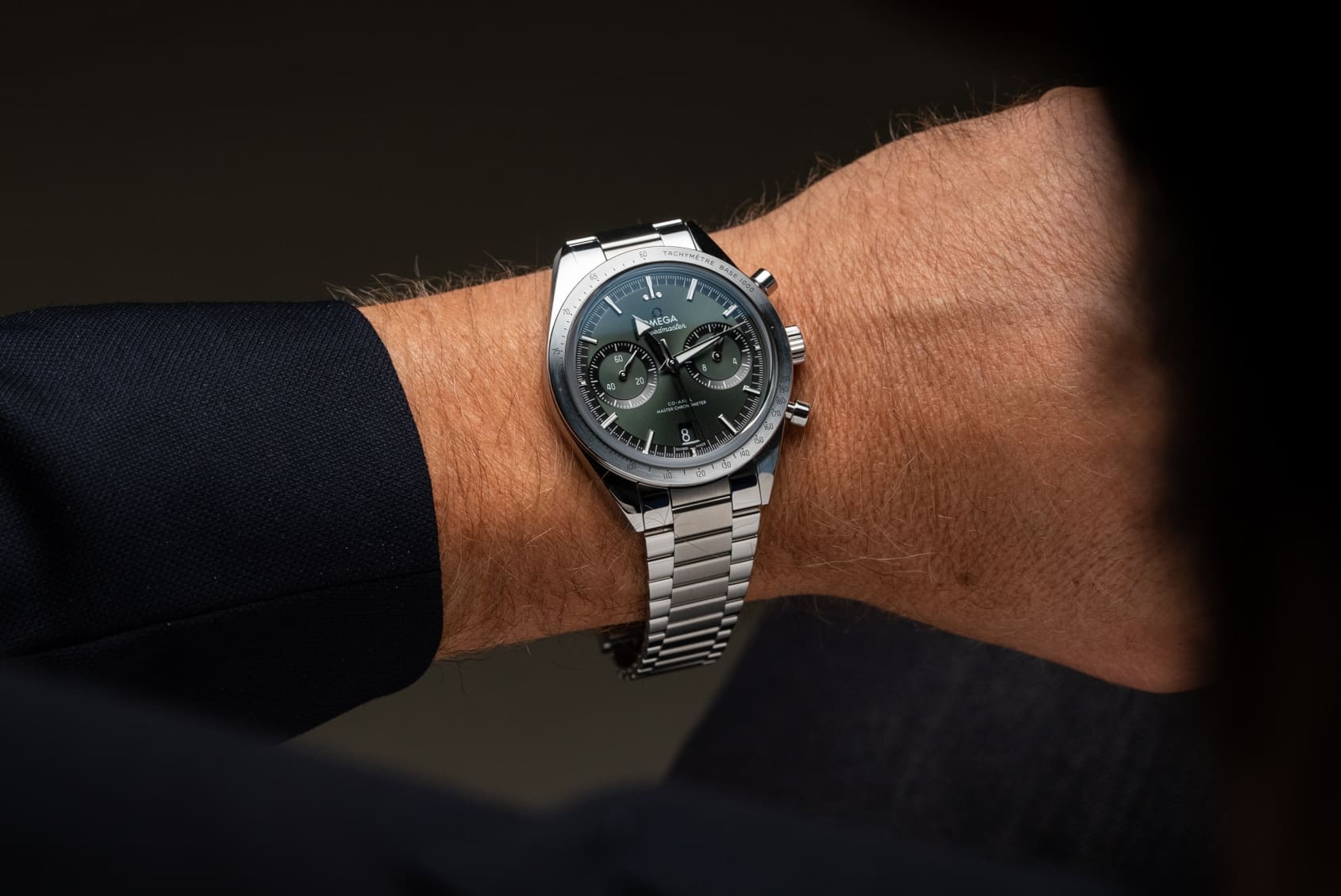Big Watches, Small Wrists Part IV: Will I ever be able to pull off the Moonwatch?
Kylie Lloyd-WyattFrank Sinatra had it right with Fly Me To the Moon. The closest neighbour to planet Earth is the place to be, in fact, in the 1960s and ’70s, the space race saw the Moon as the biggest frontier to be conquered. These days it’s Mars, as Omega recently reminded us with the Mars Timer, but let’s not go there right now.
The Space Race
Though there were watches that went into space before and after Omega, the crucial role the Speedmaster Professional Moonwatch played in the Apollo missions catapulted Omega well ahead of other horological players like the Breitling Navitimer and Rolex Daytona in the space game. The Moonwatch was, after all, the first watch to venture onto the lunar surface on the wrist of astronaut Buzz Aldrin as part of the Apollo 11 mission. Let’s also not forget that the Moonwatch played a crucial role in bringing the crew of Apollo 13 home safely by timing the re-entry burn after an oxygen cylinder exploded, crippling system operations. For this, in 1970, Omega was awarded the illustrious Silver Snoopy by NASA astronauts, an honour that lives on today in their iterations of the Silver Snoopy Moonwatch.
Me and My Moon
With all this history, you can imagine my disappointment when I first went into my local Omega boutique all bright eyed with designs on purchasing one, only to discover that it just didn’t fit. Though the case is 42mm in diameter, it has a 47.2mm lug to lug and thus I was hopeful. But this is where trying a watch on if you can, is so important. The lugs didn’t curve down enough to minimise the overhang and its 13.5mm thick steel case sat top-heavy and precariously atop my 5 ½ inch wrist. No matter how I much I adjusted it (or how hard I wished), it just would not sit comfortably. Though a NATO, especially the Moonwatch Professional issue might have solved this, I really wanted it on its exquisite bracelet, so departed the store feeling deflated.
Judging from a brief dive into Reddit, I’m not the only one who feels that the Moonwatch is just too much for a small wrist like mine. So, what is a watch nerd like me to do? What are my options in a world where there is only one Omega Moonwatch? Though there are alternatives from other brands like Bulova, for example, for a puritan like me, Omega is really where it’s at for space cred.
A New Wave
Though they might not be Moonwatches in the purest sense of the word, if you peruse Omega’s current collections you will find various excellent smaller wrist alternatives that include many of the Moonwatch’s iconic features like the lyre lugs, the Speedmaster bracelet or triple registers and even a smattering of space-race cred to hang your helmet on.
The most notable smaller alternative, shown above, is the First Omega in Space (FOIS). Yes, that’s right, this watch pre-dates the Moonwatch in being NASA-mission certified. In fact, it was worn by the crew of the first Apollo mission and thus accompanied Apollo 1 astronaut Ed White on the outside of his suit during the first American spacewalk. This watch contained the calibre 321 and is preferred by some collectors for its column wheel rather than clutch chronograph articulation.
Though there are small differences, the current reissue of the FOIS is adorned with Moonwatch hands, matte black triple register, subtle faux-tina lume and black outboard tachymeter scale true to the original. There is a clear sapphire caseback so you can see the manual calibre 321 remake ticking away and the venerable dot-over-90 is resplendent for the purist. But for us small wrist sorts, the clincher is the 39.7mm case and lack of crown guard making this 2 to 3 mm smaller than the Moonwatch case. Though the lug-to-lug of 47mm is only a fraction shorter than the Moonwatch, the Omega website assures us that the curve of the lug promises a comfortable wear.
The 38mm Omega Speedmaster is another stable-mate that might be an option for small wrists, but for me it lacks the space chops and varies a little too far from the original aesthetic to really be a true alternative. Having said that, if it’s a simple nod to the Moonwatch you’re looking for, the black dial variant with its three counters on a Speedmaster bracelet might just be for you and the in-house coaxial automatic movement is a beautiful and reliable column wheel chronograph that cannot be dismissed.
The Speedmaster Heritage ‘57 reissue deserves a mention for its history (the original being the first every Speedmaster produced), its exceedingly well-conceived design and good looks, but also because it’s a red-herring for the small wrist. The diameter of 40.5mm draws you in, but those beautiful long lugs result in a height of 49.6mm that sits long on the wrist making this piece, at least for me, untenable. Try it on by all means and marvel at the beautifully crafted sandwich dial, but don’t be surprised if it’s just that bit too big.
Nothing Like the Original
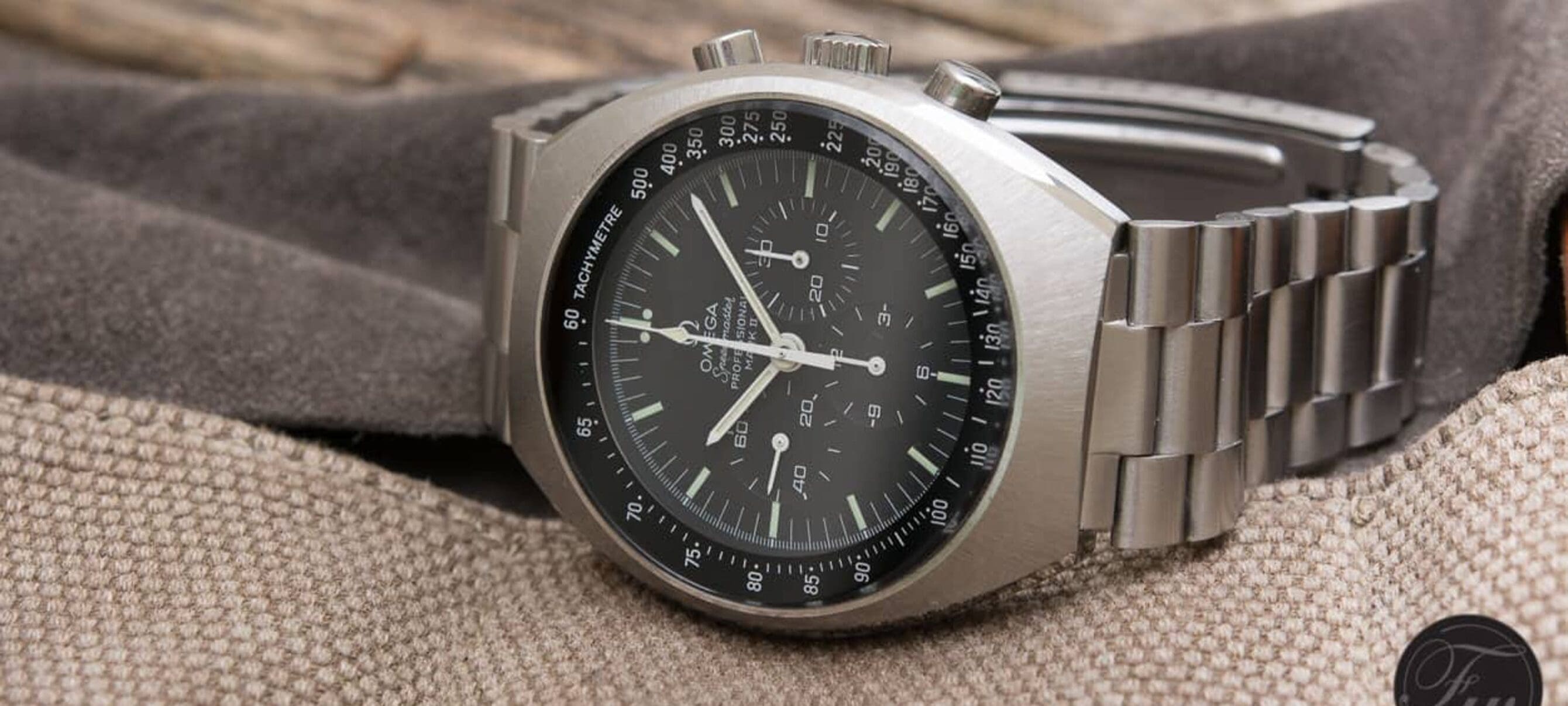
If you’re not satisfied with the new editions, the vintage market has many older references that may just meet the mark, Mark II to be precise. The reference 145.014 Mark II created in 1969 as a follow-on from the Moonwatch is my favourite reference. It contains the same Calibre 861 as the Moonwatch and the dials are almost identical, but the Mark II evolved into a modernised (for the 1970s) tonneau case and flat inlayed crystal with the tachymeter scale printed on the underside. This piece was designed for lunar surface missions and was approved by NASA for space flight, but never left the atmosphere. Rather the Mark II case ended up being used as a prototype for the Alaska Project and the watch itself went into civilian production.
So why am I waxing lyrical about the Mark II? It’s simple, it is one of the most underrated NASA Speedmasters around and well, I own one. Thus, I can categorically say that it is a legitimate Moonwatch alternative for the small wristed. The case is around 41mm east to west with a very restrained 45mm north to south. The case is graciously curved to match the wrist and though thick at 14.5mm, tapers down to the lugs so that it hugs rather than balances on the wrist. The bracelet, if you’re lucky enough to get one in good condition, falls directly downward and with a small amount of micro-adjustment at the clasp you can achieve a very comfortable fit. If you can find a good example you will be rewarded by a beautiful NASA accredited watch direct from the space race era. The racing dial on mine is a delight and the case radial brushing simply memorising.
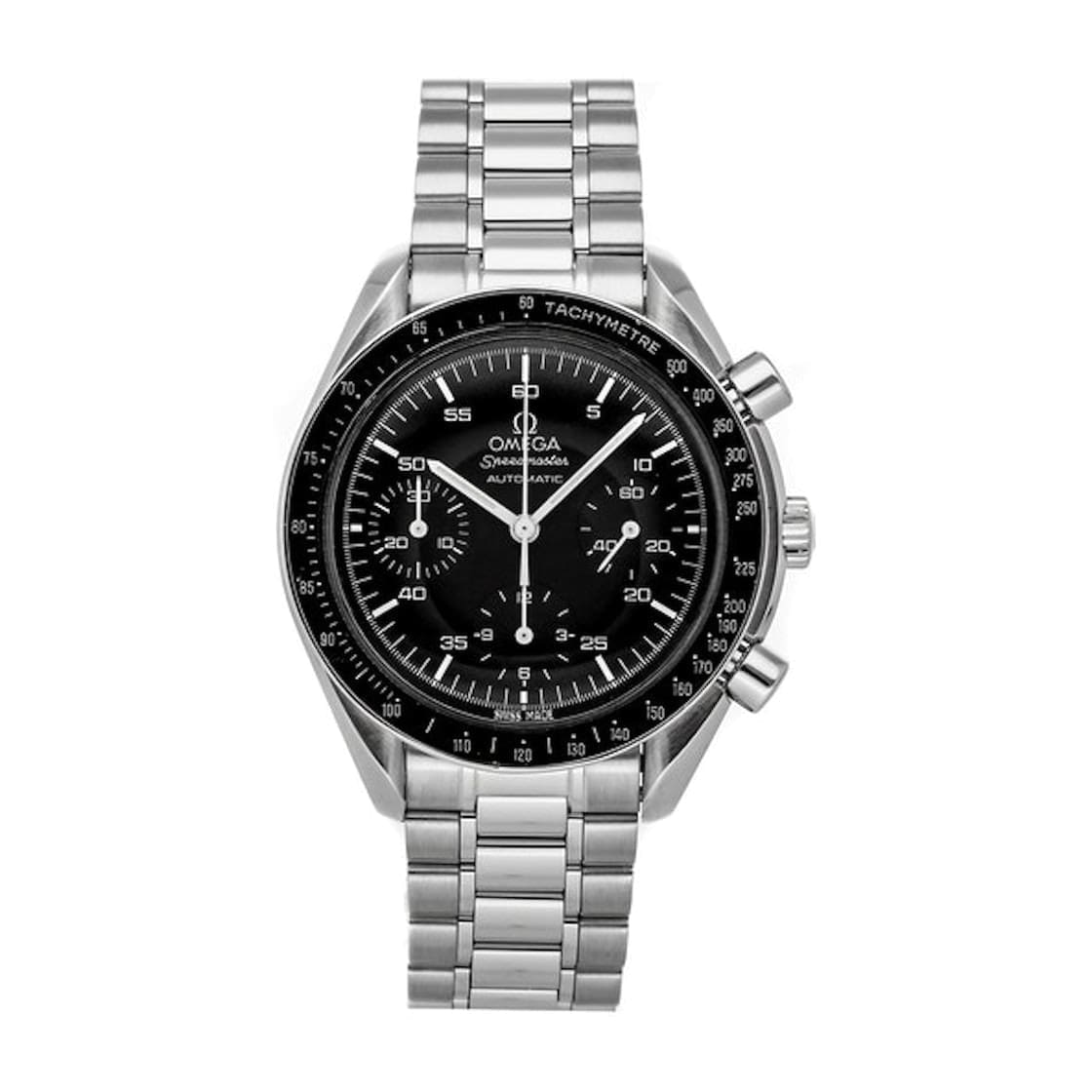
The Speedmaster Reduced reference 3510.50.00 is lauded by Reddit contributors as the small wrist Moonwatch alternative to rule them all. Yes, it was discontinued in 2009 much to the dismay of many and yes, it contains an automatic ETA movement that never got NASA approval but, oh my, with those lyre lugs, triple register, domed hesalite crystal and outboard black tachymeter scale on the Speedy bracelet it really looks the part. Not only that, but at a friendly 39mm with a very approachable 45mm lug-to-lug, this mini Moon is an exceptionally comfortable wear for small wrists. Not to mention, you can pick one on the secondary market without breaking the bank.
How High the Moon
If ever there was something humans could strive for it is to reach another celestial body, or falling short of that to strap a little of it to our wrists. So for us small wrists falling short of the real deal, hopefully this little space odyssey shows there is a legitimate Moonwatch alternative out there to proudly wear in honour of the space race and its brave contributors.




